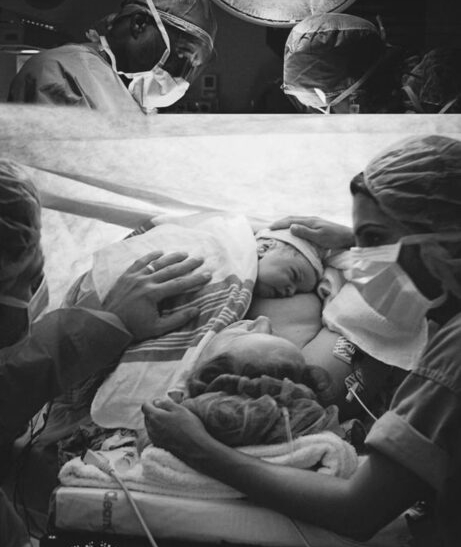5 Facts about Caesarean Section You Should Know


The Caesarean Section or C-section as it is popularly called, is a surgical operation to help in the delivery of a baby. Historically, it originates from the word ‘Caesus’ meaning ‘cut’. It is regarded as the process of cutting the mother’s abdomen and uterus to bring out the child.
Hence, there are facts about Caesarean Section that I would love to share:
- C-section may be necessary for saving a child on some occasions but, it is not always essential.
- Previously, Caesarean section has been used to save the life of a child when the mother dies during childbirth. But, it is not always the case when the mother and the child died due to the lack of anesthesia and infection exposure.
- When there are maternal and fetal health problems like a huge baby making the delivery difficult, placenta pervia (when the placenta is at the bottom of the uterus), fetal distress, etc, it is always important to use a C-section to save the mother and child.
- These days, Elective Caesarean section has been used to alleviate the pain of childbearing even when it is not medically essential. Medical professionals are strongly protesting of its potential dangers.
- Always having a C-section can lead to postpartum haemorrhage, infections and affect future pregnancies. Elective C-section can cause a lot of complications such as bleeding, infections, and breathing issues for both the mother and child.
READ MORE: 10 Foods That Makes Your Child Smart
What Is a Caesarean section?
A Caesarean section, commonly referred to as a C-section, is a surgical procedure used to deliver a baby through an incision made in the mother’s abdomen and uterus. This procedure is typically performed when a vaginal birth is not safe or possible for the mother or the baby. It is one of the most common surgical procedures performed worldwide.
Reasons for Caesarean Section
- Fetal Distress: If the baby shows signs of distress during labor, such as an abnormal heart rate, a C-section may be performed to expedite delivery and ensure the baby’s safety.
- Abnormal Presentation: If the baby is not positioned headfirst in the birth canal (breech or transverse position), a C-section may be necessary to avoid complications during vaginal delivery.
- Placenta Previa: When the placenta partially or completely covers the cervix, a C-section is performed to prevent heavy bleeding that can occur during vaginal birth.
- Multiple Pregnancies: Women carrying twins, triplets, or more may require a C-section if there are positioning issues or if the babies are in distress.
- Maternal Health Conditions: Certain maternal health conditions, such as high blood pressure, preeclampsia, or heart disease, may necessitate a C-section to protect the mother’s health.
- Fetal Size: In cases where the baby is too large to pass safely through the birth canal, a C-section may be recommended.
- Previous C-section: Women who have had a previous C-section might opt for a repeat C-section if a vaginal birth after a C-section (VBAC) is not recommended or desired.
The C-Section Procedure
During a C-section, the mother is given anesthesia, usually in the form of an epidural or spinal block, to numb the lower half of her body while remaining awake. In emergencies, general anesthesia might be used, rendering the mother unconscious.
The surgeon makes an incision in the abdomen, typically along the bikini line, and then another incision is made in the uterus to deliver the baby. After the baby is born, the umbilical cord is cut, and the placenta is removed. The surgeon then closes the incisions with sutures or staples, and the mother is taken to a recovery area.
Recovery and Aftercare
The recovery period after a C-section typically takes longer than after a vaginal birth. The mother may need to stay in the hospital for a few days, and it can take several weeks to fully recover from the surgery.
During the recovery period, the mother is advised to avoid strenuous activities, lifting heavy objects, and driving until she receives clearance from her healthcare provider. Pain management, wound care, and regular check-ups are essential for a smooth recovery.
While a C-section is a safe procedure, it does carry risks, like any surgery. Potential complications include infection, excessive bleeding, blood clots, and injury to organs.
Conclusion
In conclusion, a Caesarean section is a surgical procedure performed when Vaginal birth is not safe or feasible. It is a valuable intervention that has saved countless lives, both for mothers and babies, but it should only be performed when medically necessary.
Each pregnancy and birth is unique, and decisions about the mode of delivery should be made in consultation with qualified healthcare professionals.
The Caesarean Section or C-section is not duly necessary in child delivery. But before you embark on it, please consider the health implications.




